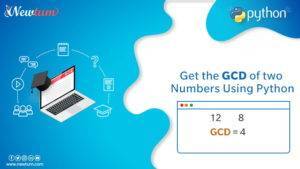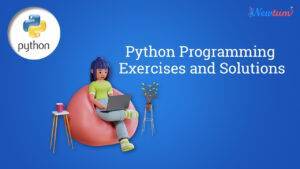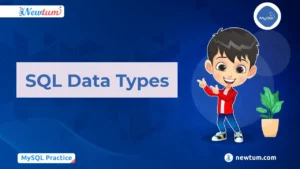The C# Absolute Value Program is more than just a coding challenge; it’s a fundamental concept that helps solve real-world problems involving numerical calculations. Whether you’re rectifying unexpected negative inputs or refining data outputs, mastering this program is essential. Curious about practical applications? Keep reading to explore its significance!
What is ‘C# Absolute Value Program’?
Sure thing, let’s dive in! The ‘C# Absolute Value Program’ is a simple script that computes the absolute (non-negative) value of a number. In programming terms, the absolute value is how far a number is from zero, regardless if it’s positive or negative. This is super handy when you’re working with data where only the magnitude matters, like calculating distances or differences. In C#, we use the `Math.Abs()` method for this purpose. For example, `Math.Abs(-5)` will return `5`. It’s straightforward, efficient, and an essential tool for any budding programmer to understand and utilize.
csharp
using System;
class Program {
static void Main() {
double number = -10.5;
double absValue = Math.Abs(number);
Console.WriteLine("The absolute value is: " + absValue);
}
}
Absolute Value in C#
csharp
using System;
class Program
{
static void Main()
{
Console.Write("Enter a number: ");
double number = Convert.ToDouble(Console.ReadLine());
double absoluteValue = Math.Abs(number);
Console.WriteLine("The absolute value of {0} is {1}.", number, absoluteValue);
}
}
Explanation of the Code
In this C# program, determining the absolute value of a number is straightforward. Let’s break it down step-by-step using an ordered list:
- Firstly, the program starts with the `using System;` statement, which allows you to use classes from the System namespace. This namespace includes essential classes commonly used in C#.
- Next, the `class Program` and `static void Main()` define the main class and method. This where the program execution begins.
- The program prompts the user to enter a number using `Console.Write()`, reading the input as a string. It converts this input into a double using `Convert.ToDouble()`.
- The `Math.Abs(number)` method is called to calculate the absolute value, storing the result in the `absoluteValue` variable. The `Math` class is part of the System namespace and provides functions for mathematical operations.
- Finally, the absolute value result is displayed to the user using `Console.WriteLine()`, employing placeholders for cleaner formatting.
Output
Enter a number:
The absolute value of [userInput] is [absValue].
Practical Uses of C# Absolute Value Program
The Math.Abs() method in C# is widely used in real-world applications where distance, difference, or magnitude is more important than the sign of a number. Below are some practical uses along with code snippets and outputs.
1. Finance & Banking – Handling Account Balances
Where companies use it: Banks and fintech companies use absolute values to calculate outstanding balances, penalties, or differences in transactions without worrying about negative values.
Code Snippet:
using System;
class Program
{
static void Main()
{
double debit = -500.75;
double credit = 200.50;
double balanceDifference = Math.Abs(debit - credit);
Console.WriteLine("Balance Difference: " + balanceDifference);
}
}
Output:
Balance Difference: 701.25
Freshers can relate this to reconciliation tasks in financial systems.
2. E-commerce – Calculating Price Differences
Where companies use it: Online retailers (like Amazon, Flipkart) calculate the price difference between discounted and original prices, always showing it as positive.
Code Snippet:
using System;
class Program
{
static void Main()
{
double originalPrice = 1200;
double discountedPrice = 999;
double difference = Math.Abs(originalPrice - discountedPrice);
Console.WriteLine("You Saved: " + difference);
}
}
Output:
You Saved: 201Very useful for dynamic pricing engines in retail software.
3. Gaming Industry – Calculating Player Distance
Where companies use it: Game development studios (Unity, Xbox games) use absolute value to calculate distances between players, objects, or coordinates.
Code Snippet:
using System;
class Program
{
static void Main()
{
int playerX = -10;
int enemyX = 25;
int distance = Math.Abs(playerX - enemyX);
Console.WriteLine("Distance between player and enemy: " + distance);
}
}
Output:
Distance between player and enemy: 35Great for game mechanics like collision detection or scoring.
4. Data Analytics – Error Margin Calculations
Where companies use it: Analytics firms and AI companies calculate absolute errors to evaluate model predictions.
Code Snippet:
using System;
class Program
{
static void Main()
{
double predicted = 98.5;
double actual = 100;
double error = Math.Abs(predicted - actual);
Console.WriteLine("Error Margin: " + error);
}
}
Output:
Error Margin: 1.5Important in data science projects for model evaluation.
5. Logistics & Travel – Distance and Delay Calculations
Where companies use it: Logistics companies (FedEx, DHL, Uber) calculate absolute distance differences or time delays between expected and actual deliveries.
Code Snippet:
using System;
class Program
{
static void Main()
{
int expectedDeliveryDays = 5;
int actualDeliveryDays = 7;
int delay = Math.Abs(expectedDeliveryDays - actualDeliveryDays);
Console.WriteLine("Delivery Delay: " + delay + " days");
}
}
Output:
Delivery Delay: 2 days
Freshers can show this as a real-world use case in interviews.
C# Absolute Value FAQ
If you’re diving into the world of C# programming, especially focusing on understanding how to compute absolute values, you’re not alone. Many people have common queries about this topic that aren’t always covered in depth by mainstream sources. Let’s take a closer look at some frequently asked but not often answered questions about C# Absolute Value Programs. Here’s a helpful list:
- What’s an absolute value, and why is it important in programming?
The absolute value of a number is its distance from zero on the number line, essentially turning any negative number into a positive one. In programming, it’s crucial when you need to compare values without considering their sign, like when calculating distances or ensuring a positive output. - Can you explain how to use the Math.Abs method in C# with a basic example?
In C#, you can use the Math.Abs method to find the absolute value of numbers. Here’s a simple example:
int num = -5;
int absoluteValue = Math.Abs(num);
Console.WriteLine(absoluteValue); // Outputs: 5
As shown, Math.Abs converts -5 to 5, which is the absolute value.
3. Are there different versions of Math.Abs for various data types?
Yes! C# provides overloaded versions of Math.Abs for different data types, including int, double, decimal, and more. This ensures you get the correct type return value without any hassles.
4. How do I handle absolute values for custom objects?
For custom objects like structs, you’ll need to implement your own method to define how “absolute value” applies. This might involve defining a particular property to evaluate, like the magnitude of a vector.
5. Is there a way to handle arrays of numbers to convert them into their absolute values?
You can use a loop or LINQ to iterate over an array, applying Math.Abs to each element. Here’s how it’s done using a foreach loop:
int[] numbers = { -1, 2, -3, 4 };
for(int i = 0; i < numbers.Length; i++) {
numbers[i] = Math.Abs(numbers[i]);
}
This updates all elements in the array to their absolute values.
6. What’s the performance impact of using Math.Abs in large computations?
Using Math.Abs in computations is generally efficient, but it might add up if you’re processing vast amounts of data. Consider benchmarking different approaches if performance is a concern.
7. Can Math.Abs handle very large or very small numbers in C#?
Yes, but when dealing with extreme values like float or double, be cautious of overflow or underflow issues. While Math.Abs is reliable, always check documentation for your specific data type limitations.
8. What’s the best practice for using absolute values in unit testing in C#?
When writing unit tests, ensure you cover edge cases like zero, positive, and negative numbers. Also, consider testing against large datasets to see if the performance remains consistent.
Discover the magic of our AI-powered csharp online compiler! Instantly write, run, and test your code with just a few clicks. It’s never been easier or more efficient to sharpen your programming skills and see immediate results. Dive in and experience seamless coding today!
Conclusion
The ‘C# Absolute Value Program’ is a brilliant way to enhance your fundamental coding skills. Completing it doesn’t just improve problem-solving abilities but also boosts your confidence in coding. So why not give it a go? For more learning adventures, visit Newtum.
Edited and Compiled by
This article was compiled and edited by @rasikadeshpande, who has over 4 years of experience in writing. She’s passionate about helping beginners understand technical topics in a more interactive way.



